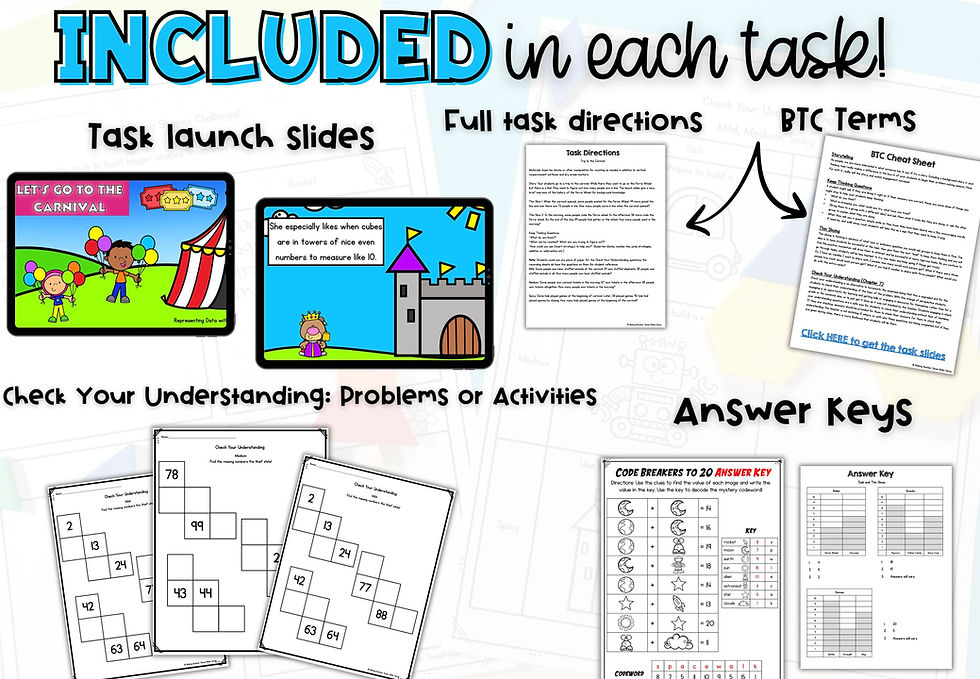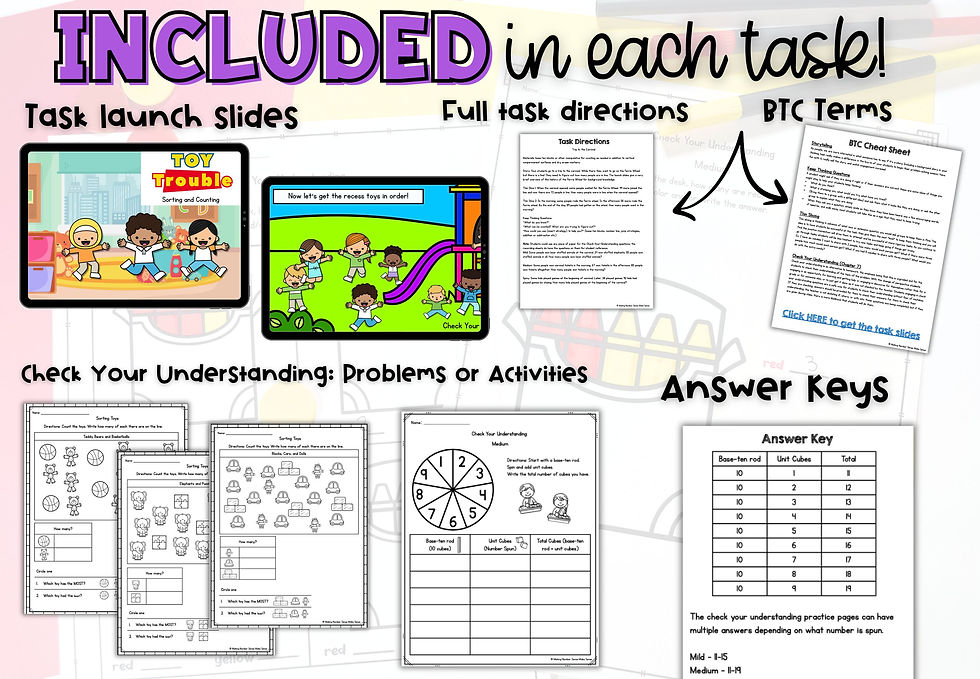Unique Pattern Centers You’ve Never Heard of (but your students will love)!
- Lara

- Feb 15, 2023
- 5 min read
Teaching patterns is such a fun unit and is often a really nice break from all of the number sense and counting stations we do all the time in kindergarten. Number Sense and Counting is so important and it's definitely a passion of mine developing number sense in young students but everybody needs a little vacation sometimes. Personally more for me than the kids there comes a point where I'm just sick of counting and I don't want to count anymore I need a break and they need a break enter patterns.
Patterns seem to be a unit that is really accessible to most students even if they don't have a strong number since yet because it's so visual and can be made very concrete where as Counting number recognition and number sense is more abstract. Patterns are a great unit to teach to break it up a little bit and it has far reaching benefits for pattern recognition when it comes to our numbers system, 100s chart, and developing and understanding how numbers work day to day.

When I was a newbie teacher it was really hard to find pattern centers or math stations that really went into patterns when I was looking. I live in a state that does not follow the Common Core so patterns are in our learning standards but not in most so finding lesson ideas to teach patterns and patterning centers was really difficult.
There were a lot of pattern mats out there which I really enjoy the kids really like and they're really great for supporting students when they're just learning how to make patterns or taking them into learning how to extend patterns but today I'd like to share with you some of my favorite pattern centers that you might never have seen before!
If you'd like to know how I introduce patterns and how I go about teaching patterns you can find them in this blog post or video. I go step by step from day one and how I introduce a pattern, and how you can continue if you choose to introduce more pattern types than the ones that I showed.
Pattern Centers
These centers are most successful when your students have been introduced to the idea of patterns and have had chances to practice recreating patterns maybe with those traditional pattern mats that are readily available. if you're wanting to up your pattern centers and add a little variety these are some great ones.
Extending Patterns
Spin-A-Pattern
To play you’ll spin the spinner and what it lands on is the core or root of the pattern. Your students will start by recreating the root and then continuing the pattern in the space under the spinner.
Roll-A-Pattern
To play Roll-A-Pattern, you’ll roll a traditional or 10 frame dice and look at the corresponding pattern root to figure out which pattern to make. There is an optional recording sheet where your students can write down the patterns they created. For example if they roll a 6 and the pattern is and ABC pattern, they will then create an ABC pattern of their own or one that matches the root on the card depending on how comfortable they are with transferring patterns but keeping the same pattern type.
Where Patterns and Number Sense Meet
The next two stations are patterning stations with some counting and number sense development snuck in. They are presented in the form of a pattern center that your students might already be familiar with but there are subitizing, counting, number recognition, one to one correspondence, and building sets of numbers practice mixed in.

Dice Patterns
At first glance Dice Patterns just looks like another traditional patterning mat except with dice on it. How you introduce this pattern Center and the variations you give to it are really where the magic starts to happen. This Math patterning station can be used a variety of ways. When I moved into my classroom there were so many dice I was like what am I going to do with all of these dice. (Spoiler I use them all way more than I thought I LOVE dice) I thought why don't we make patterns with the dice face and by doing this your students are getting familiar with number formations on a dice and subitizing those numbers so when they're recreating or extending a dice pattern they're really starting to see the values (sneaking in a little counting practice) and the faces that'll really help them. When developing their number sense when you come back number related units. If your students aren't ready they can also just create a pattern with other materials that are the same colors as the dice which is a great way for them to practice transferring patterns instead of just extending patterns.
Number Tower Patterns
The mat for this Number Tower Patterns again looks similar to other pattern mats but is used slightly differently. Each pattern starts with numerals for example 3, 2, 3, 2, and space for your students to extend that pattern. For your students to complete this patterning activity they would need to build towers that match the numbers that start the pattern. For the example if I am using the pattern mentioned above, they would have to build a tower with 3 cubes and put it in the empty spot and next build a tower with two cubes and then three cubes and two cubes until they finished the pattern. Even though the name of this patterning Center is number Tower patterns they could also use some other manipulative and make rows of three and two three and two, or links can make little chains of 3 and 2, beware though all the little chains take a lot of time for your students to clean up if you want them to take the links apart.
This pattern activity is really great for starting to understand the value of numbers and what numbers look like when compared to each other. some students might just know that three is bigger than two but some students are still really developing the concept of the value of numerals, So in this station they can see what the difference is get used to creating that same set solidifying the quantity of a number and matching that number to a value in an unexpected way since they think they're making a pattern but they're really counting and making it happen so win-win.
Next Steps- Choral Counting and the 100’s Chart

When you come back to numbers and number sense the work that you've done with visual patterns will really help your students learn about our number system.
After finishing a pattern unit there are lots of ways for your students to really see how numbers work and start to notice a lot of things they might not have seen before. When we're counting we say the numerical pattern but some students might not know that the numerals repeat also and that that knowledge will help them when learning and writing bigger numbers.
Choral counting is something we do daily in kindergarten, and when learning to count to 100 if your kids understand that the number system works in a pattern it becomes really quick and easy for them to keep their count going because it repeats and especially if they know their decades are counting by tens.
I highly recommend the Choral Counting and Counting Collections* book by Megan L Franke, Elham Kazemi, Angela Chan Turrou. In a very brief overview of how you might go about this number sense routine, you would choose the numbers that you want to count and the way that you're going to write them because the way that you write them changes what your students might notice. This is a great way to draw attention to certain number patterns that support learning goals! Choral Counting can be done digitally or on chart paper and I use this planning sheet to plan my counts.
In my next post I will take a deep dive into Choral Counting so stay tuned! Sign up here to be notified when my next post goes live!
*affilaite link




Comments